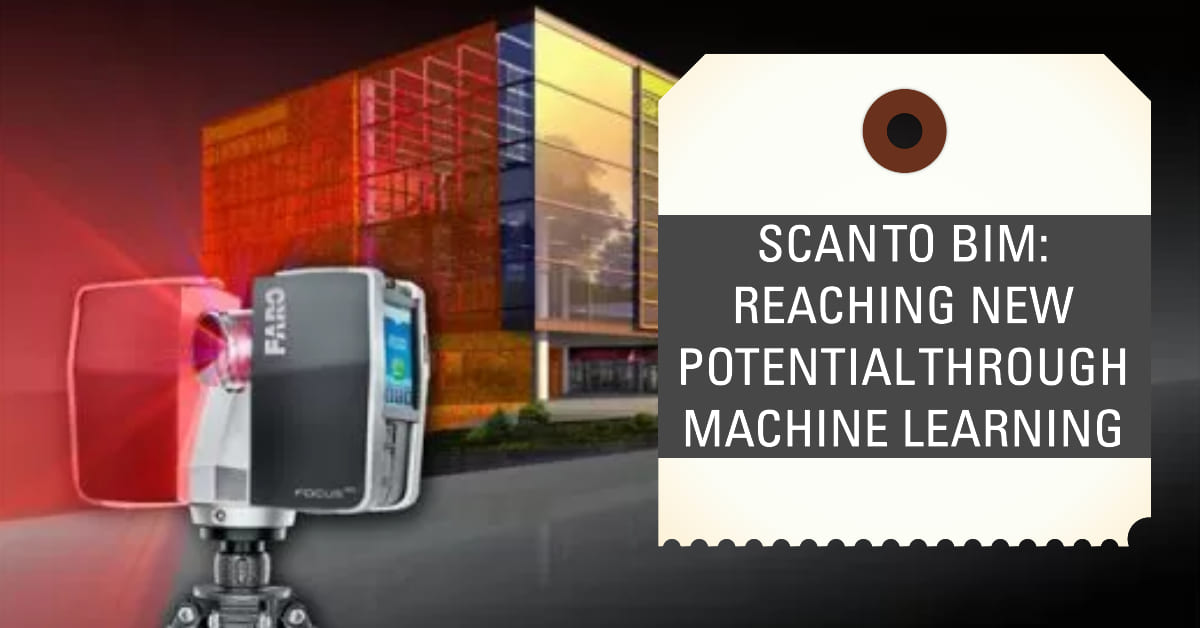
Scan to BIM: Reaching New Potential through Machine Learning
Scan to BIM has been of extensive aid for efficient execution of expansion, renovation and maintenance projects by developing 3D BIM models of existing structures through laser scan data. It has allowed architects, engineers, contractors and other construction professionals to be able to view a digital 360 degree view of a structure, making it convenient for them to assess damages, MEP layouts, structural integrity and more of the building.
Access to such detailed and accurate information makes it easy for them to identify areas requiring immediate attention to carry out repairs and renovation. They can also locate and places from where MEP and other utilities can be extended to the new structure for expansion projects. Professional, accurate, detailed and Standardized Point Cloud to BIM Services allow project managers to maintain aesthetic, functional as well as structural consistency of the establishment.
Table of Contents
Although, by itself, Scan to BIM has proven to be of exponential use to AEC professionals today, its integration with Machine Learning further broadens the scope of its applications.
What is Machine Learning?
Machine learning (ML) is the discipline of artificial intelligence (AI) that is concerned with the use and development of computer systems and programs to register, store and analyze historical data patterns to learn and adapt, becoming more accurate at predicting outcomes and improvise decision making by impersonating human cognitive functions without being explicitly programmed to do so.
How does ML empower Scan to BIM process?
The current Scan to BIM process involves the tedious task of scanning the structure, collecting the registered point cloud data and then converting it into a 3D model with BIM integration along with incorporating the latest applicable industry and country specific standards. All these activities are time consuming and require constant monitoring and human input.
Scan to BIM process, which is a part of Revit BIM Services, can be made entirely automated and smarter by implementing ML. In machine learning, the system takes informed decisions based on observations and experience as it harbors the ability to study algorithms and improvise automatically. Thus, it can be utilized by BIM software tools to learn from point cloud data and perceive algorithm based patterns therefore making independent decisions along with accelerating and improvising the overall conversion process.
For example, with the help of ML, point cloud data of a bedroom consisting of walls, door, window, furniture, fixtures, etc. can be color coded and matched to object classes like walls in blue, doors in green, furniture in red and so on. This differentiation makes it increasingly simple and convenient to visualize and navigate through the point cloud data for object identification and interpret elements to initiate modeling for the scanned data in BIM-compliant formats.
Related Blog: Why are Revit BIM Services important for Architectural Projects?
The scanned data is segmented by ML using properties of each element like dimensions, positioning, surface area, volume, etc. These properties are then processed by a machine learning model which computes and labels BIM objects like walls, floors, ceilings, etc. pertaining to their respective features.
Benefits of ML powered Scan to BIM
ML technology can be integrated with Scan to BIM to create topography, floor plan designs, etc. replacing the arduous manual tasks. Increasing number of BIM software companies have started adopting artificial intelligence and machine learning to boost the productivity and potential of their software as it offers them a host of advantages such as:
- Elimination of time and energy consuming routines and tasks involved in Scan to BIM modeling process.
- The resulting output achieved is accurate, reliable, consistent and error-free.
- The high level of automation saves time and improve productivity and provide more robust deliverables.
- Elimination of budget expansions due to reworks and related costs.
- The feature of constant updates and improvements help in delivering efficient, customized and effective solutions.
- Ability of predictive analysis helps risk detection and elimination.
- Outputs acquired are compatible to be used with any BIM application.
Conclusion
The blend of Scan to BIM with ML is revolutionary step in achieving optimum efficiency of operations, ensuring projects get completed faster and with higher accuracy. It helps project managers save significant time and cost that can be focused to improvise other aspects to deliver the highest level of customer satisfaction.
The integration of ML technology with Scan to BIM is still being developed to open up a wide array of potential for the industry in the coming days. Firms can capitalize on this opportunity by embracing modern technologies to generate productive outputs.